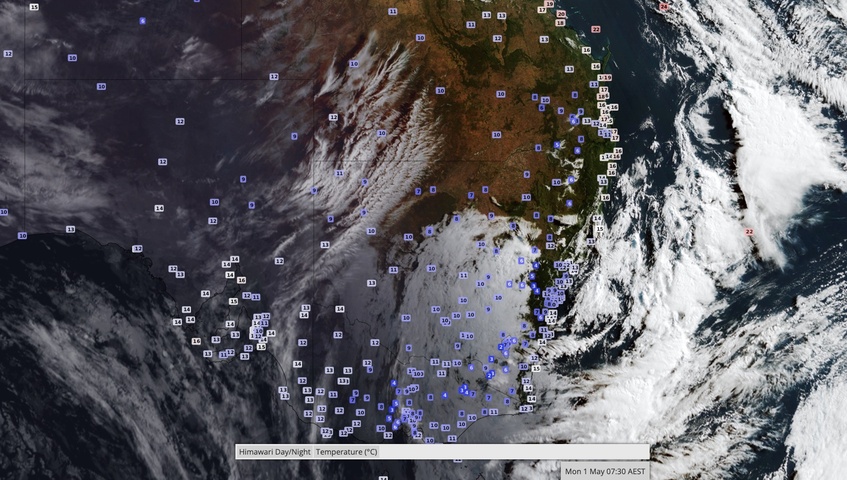Parts of central and eastern Australia experienced their coldest morning so far this year on Monday, with more wintry temperatures on the way later this week.
The first morning of May was a fittingly cold start to the final month of autumn for large areas of NSW, Qld and the NT.
The cold morning was caused by a combination of clear skies, relatively light winds and lingering cool air mass, which allowed temperatures to drop steadily throughout Sunday night into the early hours of Monday morning.

Image: Observed surface air temperature and cloud cover at 7:30am AEST on Monday.
Sydney cooled to a minimum temperature of 10.6ºC at 7:00 am on Monday, making it the city’s coldest morning since November 2022. Further inland, Moree (3.7ºC) and Bourke (4.5ºC) both had their coldest morning since last September.
A few places in Qld registered their lowest temperature in nine months on Monday, including Thargomindah (8.1ºC), Emerald (9.7ºC) and Oakey (2.1ºC).
In the NT, the temperature at Alice Springs dropped to 4.9ºC just before 7:00 am on Monday, its coldest morning since September.
Monday’s cold start came a day after Melbourne cooled to 5.0ºC on Sunday morning, its lowest temperature in seven months.
Looking ahead, a pair of cold fronts will bring more cold weather to a broad area of southeastern Australia later this week. This is likely to include more lowest temperatures of the year, along with a wintry mix of blustery winds, rain, hail and snow.

Image: Forecast 850 hPa temperature this Sunday night, showing a large cold air mass over southeastern Australia.
To find out about Weatherzones temperature forecasts, visit our website or email us at apac.sales@dtn.com.






